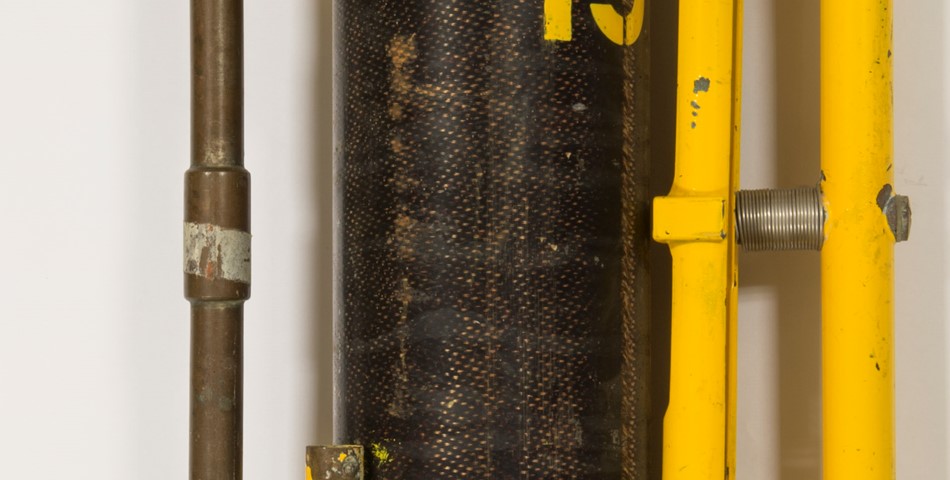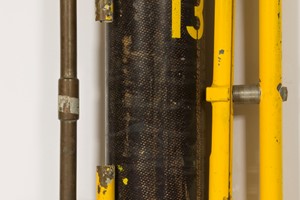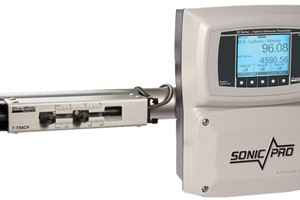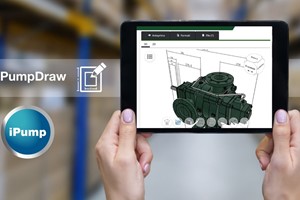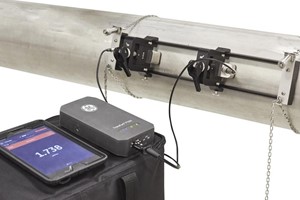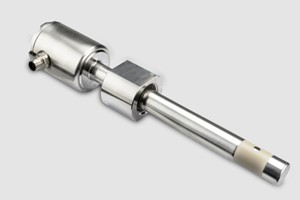The drillhole is pumped during sampling. Since the target fracture can be accurately located the water volume to be flushed in the test section can be minimized (distance between upper and lower rubber disks can be short). This makes sampling fast. Moving the sampler in the drillhole is also fast since there is no tubing going down, just the logging cable. The flow direction is always out of the fractures into the drillhole if the drillhole is pumped with a sufficiently large drawdown. This enables the sampling of the fracture specific water and separate measurements of both the EC and the temperature of water flowing from the fractures. Flow inside the test section is directed through the sample cylinders, the flow sensor and the electrical conductivity (EC) electrode. Flow along the drillhole is directed around the test section by means of a bypass pipe and is discharged at either the upper or lower end of the probe. The water sampling programme is usually designed on the basis of previously measured flow results. Flow and SPR measurements make it possible to locate the fractures that have been selected for EC measurements and water sampling. The probe is deployed so that the fracture to be tested is located within the test section. EC measurement is then started if the flow rate is larger than a predetermined limit. The probe is kept positioned over the selected fracture and measurement is continued allowing fracture-specific water to enter the test section. The time required to complete an EC measurement can be calculated automatically from the measured flow rate with the aim being to achieve adequate flushing of the volume of water within the test section. The water volume within the test section is changed at least three times before the water samples are collected. When the closing mechanism closes the valves of the sample cylinders, the tube for the fracture flow is also closed. This can be seen in the flow measurement results. For controlling the sampling procedure the following measurements are important:
SPR (Single point resistance, electrode between the upper sealing disks) result is compared with the previously measured SPR for accurate location of the fracture in spite of possible stretching of the logging cable. This makes it possible to use a short section length and a short distance between lower and upper rubber disks. This in turn makes it possible to use short sampling times.
Flow measurement is used to confirm that the probe is positioned correctly on the target fracture.


Flow measurement is used to evaluate the adequate time for flushing of the volume of water within the test section.
EC measurement can be used to evaluate the possible change of water properties during the sampling.
Flow measurement is used to confirm that the valves are closed at the end of sampling when the probe is still on the fracture.



